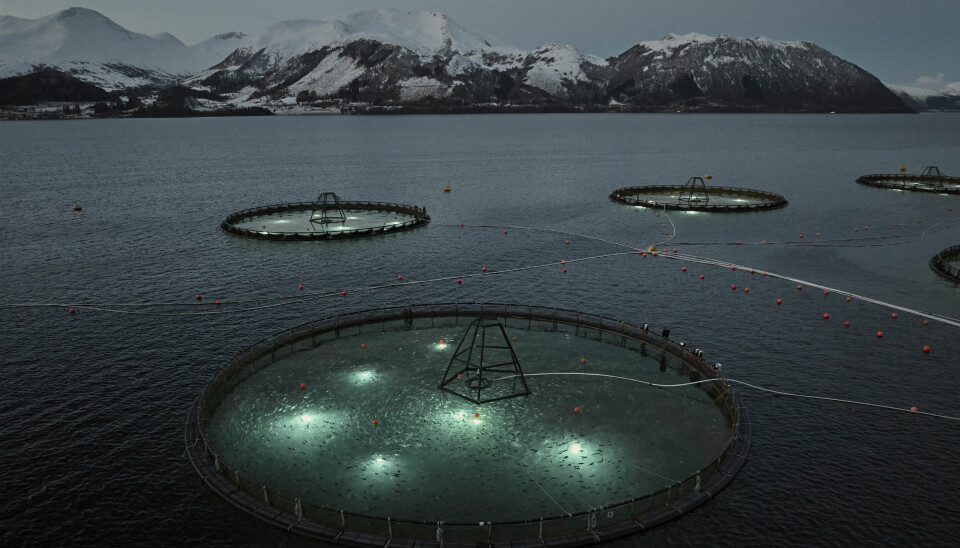
Lighting shown to prevent farmed cod from spawning
Fish reach harvest size with very small degree of sexual maturation, conclude researchers
Researchers in Norway have verified that use of lighting can largely prevent the early maturation of farmed cod in sea pens – a development that could potentially open the door to more farms being granted permission by authorities.
LuxCod, a study conducted by scientists from Møreforsking (Møre-research), focused on measuring the continuous light management in fish pens to understand its effects on cod maturation. The study utilised cod sourced from a farm operated by Ålesund-based cod farmer Ode at Svartekari in Bremanger municipality, Vestland county.
The results of the study demonstrated that light management significantly delays sexual maturation in farmed cod, avoiding maturation throughout the entire production period.
Maturation misery
Early sexual maturation in farmed cod represents a significant economic and production disadvantage, resulting in increased mortality, lower growth rates, and reduced quality. The Norwegian Institute of Marine Research has also highlighted the potential risks of sexually matured farmed fish spawning in pens and impacting wild cod in the surrounding area.
Earlier this year another Norwegian cod farmer, Norcod, was ordered by the Norwegian Directorate of Fisheries to harvest fish early after examinations of individual fish indicated that some of the biomass was going to reach maturity before the end of Norcod’s planned harvest period.
Together with the Institute of Marine Research and BioMarin, Ode has developed a comprehensive light management regime based on academic research and cod farming experiences. This technique ensures that fish do not reach sexual maturation in the pens, allowing for optimal production while avoiding genetic influences and ecological concerns.
The LuxCod researchers closely monitored the production
process over time, systematically sampling fish through the cycle with average
weights up to 5 kg after 21 months’ production. The study documented the effect
of light management through gonad maturity and demonstrated that the correct
use of light management enables control of sexual maturation.

“This is an important breakthrough for the entire cod farming community and proves our potential to grow to a large share of the seafood category,” said Ola Kvalheim, founder and chief executive of Ode.
“It has been important to document these findings through scientific studies. It gives the authorities, the customers, and the entire public domain the facts supporting our sustainable and important food production capabilities.”
Ode, which was founded in 2020, will produce 4,000 tonnes of cod this year, and plans to increase this to 15,000 tonnes in 2024 and 30,000 tonnes in 2025.
By this autumn the company will have five operational marine sites along the west coast of Norway - one in Vestland, and four is in More og Rømsdal.
Slowing sexually maturity
In its report on the LuxCod project, Møreforsking wrote that the findings from the project show that there is a gradual increase in sexual maturation and gonad index from autumn to late winter as the fish approaches two years in the sea phase but is significantly lower than what is seen in a fish that is undergoing sexual maturation towards the natural spawning season.
None of the fish were characterised as spawning in the first five sample batches, and only a very small proportion, 2%, in the sixth (~ 21 months in the sea), were characterised as spawning.
“Based on the results, it is concluded that the lighting control used in cages at this location has a very good effect on limiting and delaying sexual maturation. The results and documentation in the LuxCod project show that with sufficient use of light control, it is possible to obtain fish ready for slaughter with a very small degree of sexual maturation,” concluded the research organisation.
Will the brake come off?
Until now, it has been very difficult for Norwegian cod farmers to gain access to new locations due to uncertainty about sexual maturation. With the results from LuxCod, Ode now hopes that the administration will be able to open up and see that it is possible to operate cod farming without the risk that has been the basis for most refusals.
This also supports the stated ambitions of the current and previous governments to focus on farming new species. In addition, the company sees positively that the Directorate of Fisheries has now taken the initiative to prepare a common framework for mapping and monitoring the sexual maturation of fish in cages in order to be able to take measures when necessary. This is something Ode as a company already carries out regularly.
“Since its inception, Ode has worked continuously to prevent early sexual maturation in the cod by means of a very comprehensive regime for light control,” said Kvalheim.
“This has also been one of the most important prerequisites for us now being able to deliver large and beautiful cod - every day, all year round.
“Cod farming has in a few years become an industry with great potential, at the same time it is important to us that the industry grows in the right way and that new knowledge is built on along the way. The results we are now presenting to LuxCod speak for themselves: cod farming is here to stay.”






















































